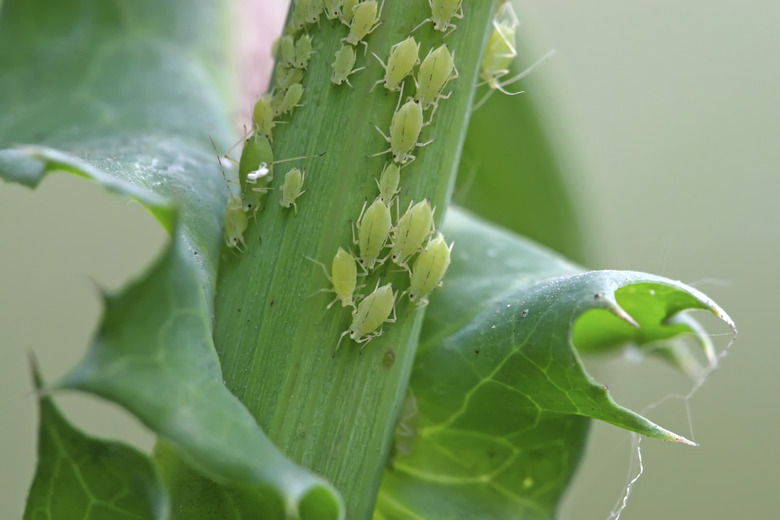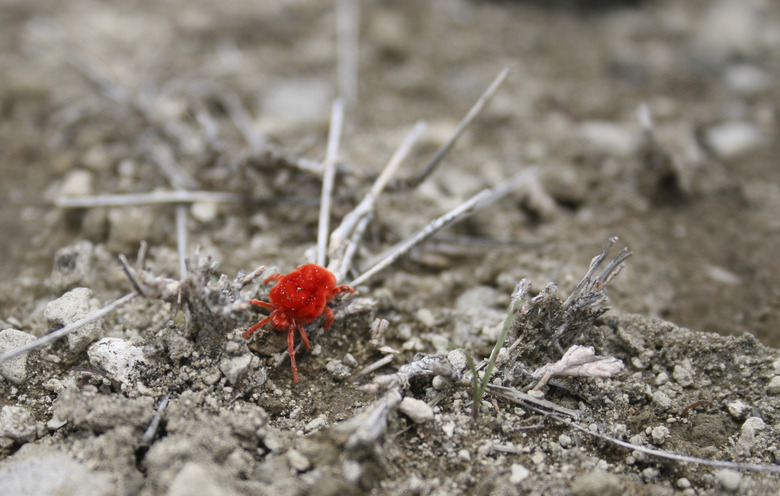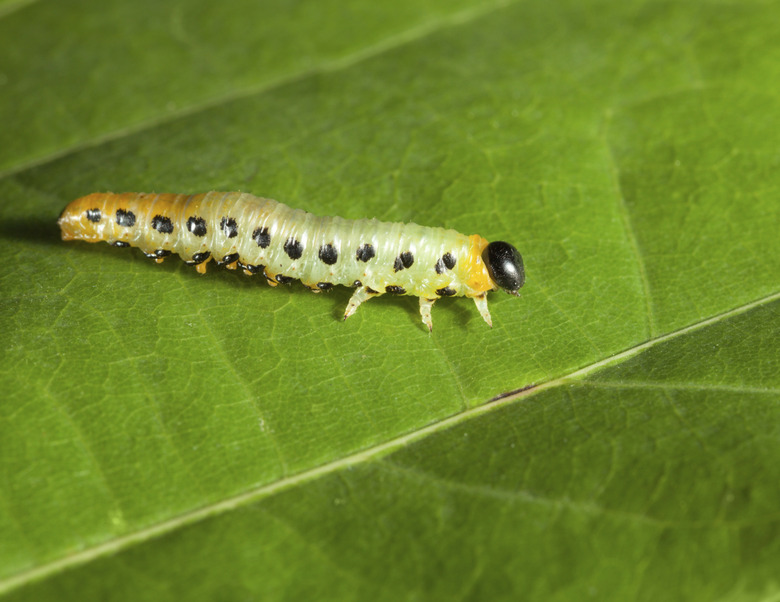Bugs That Eat Cucumbers
All parts of cucumbers (Cucumis sativus) — roots, leaves, buds, flowers and fruits — are vulnerable to attack from pests. These annual vines or bushes can grow 12 to 18 inches tall and spread 3 to 8 feet wide. Covering rows with floating fabric row covers until flowering begins and blasting bugs off cucumbers with a hose provides an environmentally friendly control for some pests, such as cucumber beetles, aphids and spider mites. Using harsh insecticides can kill beneficial insects like lady beetles, predatory mites and minute pirate bugs, which control pest problems naturally.
Step 1
Cucumber beetles can attack cucumbers from the moment they sprout. Spotted, striped or banded insects, cucumber beetles eat all parts of cucumber plants and feed throughout the season. Beetle species include spotted cucumber beetle (Diabrotica undecimpunctata howardii), which is yellowish-green and has 11 black spots and a black head, and striped cucumber beetle (Acalymma vittatum), which is yellow with three black stripes from head to tail. The beetles are generally less than 1/4 inch long, but a heavy infestation can slow plant growth or kill cucumber plants. Cucumber beetle larvae feed on plant roots, and the beetles transmit cucumber bacterial wilt, which overwinters in their intestines. Remove weeds to reduce hiding places for the insects and hand pick beetles from plants, dropping them into a bucket of soapy water.
Aphids
Step 1
Aphids suck sap from cucumbers and cause distorted and dead leaves. Melon aphids (Aphis gossyppi) in particular target cucumbers and related plants, clustering on the undersides of leaves and causing curled leaves, which turn brown and die. Ranging in color from black to green and light yellow, melon aphids usually attack after the cucumber plants form runners, which are the side shoots that grow along the ground. These winged or wingless insects transmit cucumber mosaic virus to cucumber plants. The first sign of an aphid infestation may be a sticky excretion, called honeydew, covering the leaves.
Step 2
- Cucumber beetles can attack cucumbers from the moment they sprout.
- Cucumber beetle larvae feed on plant roots, and the beetles transmit cucumber bacterial wilt, which overwinters in their intestines.
Spider Mites
Step 1
Fine webbing and whitish-yellow stippling are signs of a spider mite infestation on cucumbers. Spider mites eat the contents of individual leaf cells, and symptoms progress from tiny spots to overall leaf yellowing, bronzing and death. Inhabiting the undersides of leaves, spider mites are tiny and difficult to see without a magnifying glass, but damage can become extensive before you notice the infestation. One leaf can support hundreds of mites. Two-spotted spider mites (Tetranychus urticae) target cucumbers and can stunt plant growth and kill plants. Dry, hot weather encourages spider mite infestations.
Pickleworms
Step 1
Cucumbers are the favorite food of pickleworms ((Diaphania nitidalis). Infesting stems, flowers and buds, pickleworms also tunnel through cucumber fruits, making them inedible. Pickleworms can kill a cucumber plant. Pickleworm eggs resemble grains of sand and appear in small groups or singly on leaves. The eggs hatch in three to four days, and the green, brown-headed larvae bore into cucumber plants, leaving small holes sometimes surrounded with sawdustlike frass. The larvae molt four times, grow to 3/4 inch long and form pupae in folded over leaf portions within nine to 28 days. After a week to 10 days, the adult moths emerge. Early planting and destroying infested plant parts helps control pickleworms.
Step 2
- Fine webbing and whitish-yellow stippling are signs of a spider mite infestation on cucumbers.
- Two-spotted spider mites (Tetranychus urticae) target cucumbers and can stunt plant growth and kill plants.



